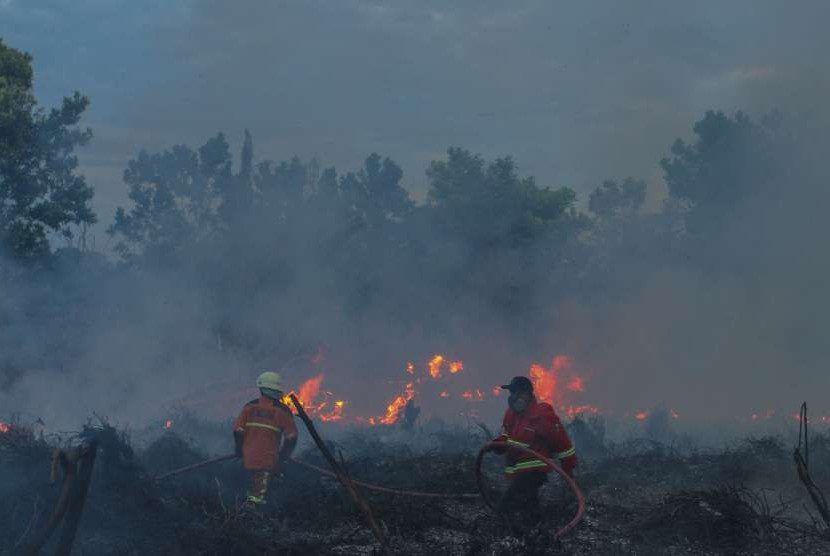Causes and impacts of forest fires – Before discussing fires, of course, we must first know what the definition of fire is. In this case, of course, fire has a role as a trigger for a fire that occurs somewhere. A small fire can become big and start a fire.
Fire is a chemical reaction formed from three elements, namely heat, oxygen, and fuel that produce light and heat. The three elements are combined and become one element, namely fire. That’s why the fire we see today can produce light as well as a sense of heat around it.
There is so much to know about water, fire, and air, such as their uses, properties, sources, and dangers. This book is perfect for those of you who want to know. Learning becomes fun and adds insight.
Fire itself is an uncontrolled fire that can damage safety and property around us. The nature of the fire before the fire becomes very large, usually burning nearby objects within 3 to 10 minutes. That is why if a fire occurs in a residential area, it will spread to nearby houses. Especially if the fire occurred in the forest. All life in the forest such as flora, fauna, and even humans can also die because of fires that occur.
Therefore, on this occasion, Sinaumedia will discuss the causes and impacts of forest fires. For those of you who are curious about the causes and effects, let’s look at the following review!
Forest fires
Forest and peat fires are surface fires where fire burns fuel such as, (debris, trees, shrubs, etc.) above the surface. Then, the fire spreads irregularly below the surface (earth fire), burning organic matter through peat holes and roots of bushes/trees, the tops are bound to catch fire.
In its development, the fire spreads both vertically and horizontally in the form of smoke pockets, burning with only white smoke visible above the surface. The fire will be very difficult to extinguish, considering that the fire starts underground and only smoke rises to the surface.
Previously, Indonesia had experienced forest fires with the largest volumes, these fires occurred in 1982, 1983, 1991, 1994, 1997, 1998, 2006 and 2015. Fires in 2015 covered 80% of Sumatra’s area with thick smoke from fires. The impact of forest fires is certainly detrimental to various parties, ranging from the economy, health, and also social society because the smoke also disturbs neighboring countries. Therefore, it is necessary to take serious handling of this disaster and analyze the causes of its occurrence.
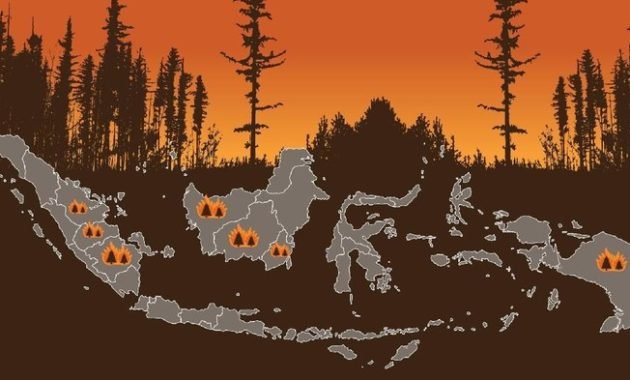
Causes of Forest Fires
The causes of forest fires certainly have various things, namely from nature and humans. Here are the causes that make forest fires.
1. Prolonged Drought
The dry season that is too long is the cause of forest fires because nature is difficult to control. These fires are often started by the friction of trees or dry leaves. Naturally occurring friction can cause fires and forest fires. Forest fires due to the long dry season often occur on mountain slopes.
2. Lightning Strike
Lightning is a natural cause of forest fires. In general, lightning strikes have a greater impact in the dry season. If the soil with vegetation is dry and flammable. Sometimes lightning causes fires in rough, hard-to-reach terrain.
Just like what happened in California in August 2020. Lightning continued to strike for almost three days. This occurred as many as 12,000 strikes and sparked large-scale fires. This fire is recorded as the largest fire in California.
3. Volcanic Eruption
Volcanic eruptions are the cause of forest fires that occur naturally. These forest fires become more intense in the long dry season. The greatest risk is that the vegetation area will be burned by the volcanic material ejected during the eruption.
Forest fires in mountainous areas are difficult to control and invisible. Usually, only clouds of white smoke can be seen from a distance. If you see smoke from the mountains, it indicates that the vegetation is burning.
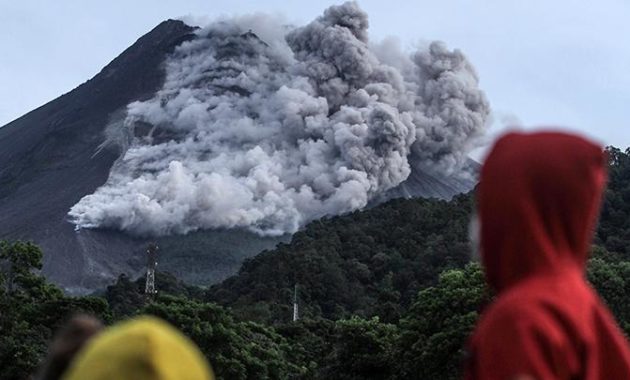
4. Indiscriminate Deforestation
Mass indiscriminate logging is one of the causes of forest fires that should not be underestimated. Especially if people do logging carelessly. Deforestation machines are a cause of fire hazard, especially in the dry season because these machines emit sparks.
5. Throwing Cigarettes Carelessly
Smoking in the forest can cause forest fires. This time, not natural, but man-made. The risk is even greater when the vegetation dries up due to the long dry season. Not to mention cigarette sticks and dry leaves can burn if rubbed against each other. So, be careful when in the forest. To protect the environment, do not throw cigarette butts carelessly.
6. Wildlife Hunting
Hunting for wildlife also indirectly causes forest fires. Especially if the hunters hunt with firearms that can cause sparks. This not only depletes the forest, but also threatens the flora and fauna that inhabit the forest.
7. Land Clearing
Forest fires can start naturally. However, this does not apply in the case of land clearing. Most human actions are the cause of forest fires. Just like what happened in Kalimantan and Sumatra. Forest fires flare when new land is cleared for oil palm trees. Even forest fires that occur affect habitats in rural and urban communities.
If forest fires have occurred then it is not only plants and animals that are a problem. Various health problems related to breathing pose a threat to local residents. In this case, the government must intervene to overcome it.
8. Wild Burn
Illegal burning creates valuable land with a high level of vulnerability. Uncontrolled fires spread easily into this critical forest area. Illegal burning often leaves residues in the form of dry leaves, twigs, and branches that grow and accumulate in forest areas. During the dry season the residue from this illegal burning can dry up and cause new forest fires.
9. Campfire
The forest is truly the most comfortable place to pitch a tent and camp. Then make a fire to keep it warm. Unfortunately, many people are wrong. Campfire debris that is not extinguished properly can cause forest fires.
10. Population Migration
The next cause of forest fires is forest invasion or migration of people in the forest. Not many people know about this. In connection with the increasing needs of people’s lives and the increasing number of families. This requires the community to increase the area of their land.
11. Farm Animal Feed
People who live around the forest, most of them raise livestock and graze making it a side job to meet the needs of their families. The needs of forage (Forage Forage) and grazing areas must be met.
To achieve good quality and a high level of palatability, people usually burn grasslands that are no longer productive. After the prairie is burned, new vegetation will grow with better quality and higher nutrient content. But, of course, it could also burn the surrounding forest.
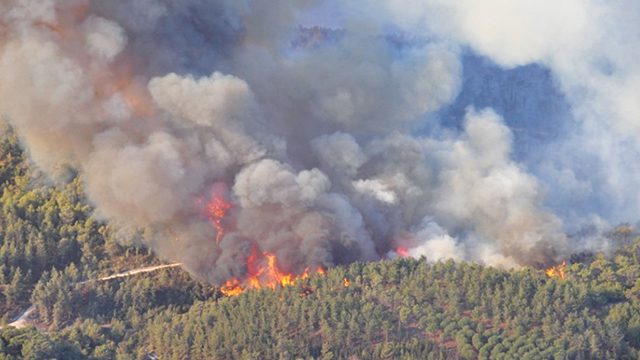
Forest Fire Impact
Fire certainly has a bad impact on living things on earth, especially humans. The following is the impact of forest fires.
1. Loss of Habitat for Living Creatures in the Forest
Forest fires in Riau that occur automatically can damage the habitat of local animals. Creatures that live in the forest are expelled and stop surviving, such as interacting, foraging, breathing, and so on. There were also rumors that a tiger had come out of the forest. He is looking for another place to live to replace what he has lost. Apart from being homeless, the creatures in the forest could die if they failed to escape.
The creatures of the forest have been searching and finding new habitats will disturb the people. If this continues and there is no further treatment, losses will occur. Humans will also lose their habitat because they will be displaced by animals that have lost their homes.
2. The fall of a big tree
A tree that was supposed to live for many years accidentally fell. The existence of what is happening will also be disturbed. If this continues, forest fires continue to occur and are not accompanied by appropriate repairs, we will lose green open spaces that can produce oxygen and natural resources. Indeed this time the results are not small, but the losses will be much greater.
The disadvantage is that the existing agricultural land is used for construction and settlement, while the forests inhabited by other organisms are instead used to expand arable land. In the future, our generation will only think that the forest is just a fairy tale because the past has come, they can’t find the forest. The absence of the forest would also cause a lot of damage. Such as floods, landslides, global warming, and rising temperatures.
3. Disrupted Health
Forest fire smoke can cause local irritation of the mucous membranes of the nose, mouth and throat in direct contact with the smoke and cause allergic reactions, inflammation, and possibly infection, from ARI and if severe can cause pneumonia.
The ability of the lungs and respiratory tract to fight infection is also impaired, making infection more likely. Acute Respiratory Infections (ARI) are becoming more likely to occur, mainly due to an imbalance in the immune system (host), bacteria/viruses, and other pathogens (agents) as well as a bad environment.
4. Hard to Find Clean Water
Forests are containers for water which is necessary for survival. If the forest continues to be drained, automatically nothing can hold water, both rainwater and mountain water. The presence of water and forest is proportional. If the forest is depleted, there is nothing left to hold water, reducing the groundwater supply (artesian).
If this continues, it will be difficult for living things to get clean water. Losses due to lack of clean water, including public health, will be disrupted, the water cycle will be disrupted so that it affects climate change such as long droughts, and irregular rainfall cycles.
5. Disrupted Economy
This can happen because the smoke from pollution due to forest burning is very thick as a result, it disturbs residents to carry out economic transactions. This loss has an impact on residents because it can reduce the income of residents who work in the private sector. In addition, regional agencies also interfere with activities based on regional governments in carrying out regional development.
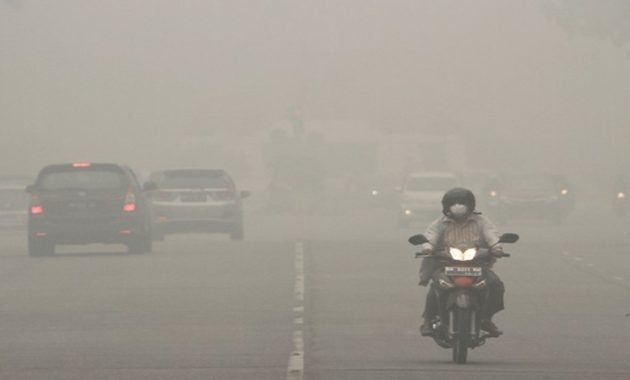
6. Global Warming
Due to the inclusion of chemicals such as carbon monoxide (CO) and aldehydes, pollution from intentionally forest fires is much more dangerous than natural forest fires. The disadvantage of contaminated smoke is that it interferes with public health and prevents plants from photosynthesis.
In addition, the harmful effects of ozone, nitrogen oxides, carbon dioxide, and hydrocarbons. Different types of substances can travel long distances and be converted into other gases such as ozone or particles such as nitrate species and organic oxygen during this transport. The ozone layer can also be destroyed by these chemicals. When the ozone layer is damaged, the Earth’s surface temperature rises, global warming occurs, and the polar ice caps melt.
In addition, UV rays radiate directly to the earth (nothing is in the way). It can also affect public health, including UV-induced skin cancer. The next disadvantage is the greenhouse effect it causes. This is because the smoke produced blocks the heat bouncing off the biosphere.
As a result, the heat bounces off the surface and reflects the smoke that is present and cannot escape. If this continues, the greenhouse effect that occurs can melt polar ice, and if this happens the country could sink.
The dynamics of changes in pollutants that enter the environmental body are increasingly varied in quality and more in terms of quantity, this is influenced by the high variety of human activities on earth. The entry of pollutants into the environment will have a direct and indirect impact on the environment and public health in the area. To anticipate this, an analysis of the potential risks both to the ecology and the community is carried out early so that the pollutant rate can be controlled and a prevention scenario is also made.
7. Limited Food Ingredients
Limited community activities outside the home or area hamper community farming. Not only because the community cannot carry out agricultural activities as usual, but also because the plants that are growing are no longer able to return to their optimal level.
If this happens, the community will be malnourished. Even the food provided by the government is limited and cannot reach remote areas. The disadvantage of this food shortage is that long-term starvation can lead to death.
that’s the article on the causes and effects of forest fires. Of course, these forest fires have a very bad impact on life on earth. Especially if this forest fire occurs because of human activity. With this, we must be able to maintain the forest as the lungs of the world so that we can still live healthy on earth.

